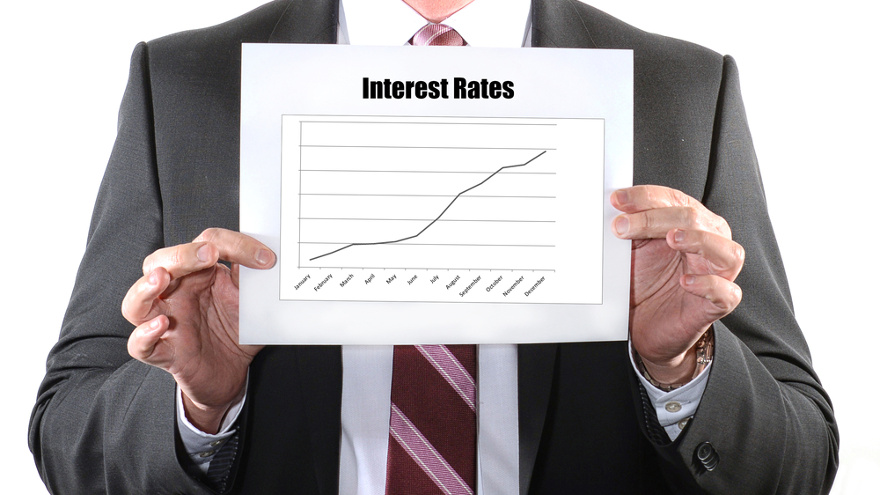Consumers, dealers and OEMs all likely to feel impact of latest interest-rate uptick

By subscribing, you agree to receive communications from Auto Remarketing and our partners in accordance with our Privacy Policy. We may share your information with select partners and sponsors who may contact you about their products and services. You may unsubscribe at any time.
CARY, N.C. –
Cox Automotive is seeing how actions by the Federal Open Market Committee (FOMC) at the Federal Reserve is impacting auto-financing activities as well as other major segments of the automotive space.
Cox Automotive chief economist Jonathan Smoke recapped that the FOMC voted unanimously on Wednesday to increase the federal funds rate for the seventh time since 2015. Thanks to another rise of 25 basis points, the target for short term rates is now in the 1.75 percent to 2.00 percent range, a full percentage point higher than a year ago.
“These increases are impacting lending and borrowing costs across the U.S. economy. Average rates on automotive loans are up slightly more than a percentage point over last year and near seven-year highs,” Smoke said.
“The 1-percent increase on the average auto loan we’ve already seen has increased the average monthly payment by $14. Throw in higher vehicle prices, and average payments are up over 4 percent from last year,” he continued.
“Higher rates are a problem for a consumer-driven economy as interest rates rise, debt service takes up a bigger chunk of income,” Smoke went on to say. “Data on personal income and consumption through April indicate that U.S. consumers have seen a 12 percent increase in interest payments year-over-year.”
FOMC members explained in their statement released on Wednesday that despite the metrics Smoke referenced, policymakers indicated their recent data suggests that growth of household spending has picked up, while business fixed investment has continued to grow strongly.
Subscribe to Auto Remarketing to stay informed and stay ahead.
By subscribing, you agree to receive communications from Auto Remarketing and our partners in accordance with our Privacy Policy. We may share your information with select partners and sponsors who may contact you about their products and services. You may unsubscribe at any time.
On a 12-month basis, the Fed said both overall inflation and inflation for items other than food and energy have moved close to 2 percent. Indicators of longer-term inflation expectations are little changed, on balance, according to the FOMC.
Fed chair Jerome Powell explained why the committee took the action it did.
“We continue to believe that a gradual approach for increasing the federal funds rate will best promote a sustained expansion of economic activity, strong labor market conditions and inflation near our symmetric 2 percent goal,” Powell said in his statement at the beginning of a nearly hour long press conference that he plans to have following every FOMC interest rate update coming in 2019.
“We are aware that raising rates too slowly might raise the risk that monetary policy would need to tighten abruptly down the road in response to an unexpectedly sharp increase in inflation or financial excesses, jeopardizing the economic expansion. Conversely, if we raise interest rates too rapidly, the economy could weaken, and inflation could continue to run persistently below our objective,” Powell continued.
“The committee’s gradual approach is reflected in participants’ projections for the appropriate path for the federal funds rate,” he went on to say. “The median projection for the federal funds rate is 2.4 percent at the end of this year, 3.1 percent at the end of 2019 and 3.4 percent at the end of 2020.
“By 2020, the median federal funds rate is modestly above its estimated longer-run level. These projections are very similar to those made in March. Although the median federal funds rate edged up this year and next, most participants did not revise their projections,” Powell added during his appearance that can be viewed here or through the window at the top of this page.
The Fed has four more chances to adjust interest rates this year with the next opportunity coming at the end of July. Comerica Bank chief economist Robert Dye projected that the FOMC might hold interest rates steady until making an upward move in December.
Along with vehicle buyers paying a little more each month of their installment contract, Cox Automotive senior economist Charlie Chesbrough pointed out the Fed actions impact other segments of the automotive industry, too.
“Buyers aren’t the only market participants effected. Manufactures and dealers are also impacted by higher interest rates,” Chesbrough said. “For OEM incentive spending, the cost of providing low interest rate loans goes up. For a $35,000 vehicle, providing ‘zero-for-60’ at 2.9 percent versus 3.9 percent is a difference of over $900.
“And for dealerships, the cost of acquiring and maintaining inventory — floor planning — also rises, which shaves a little deeper into already tight profit margins,” he continued. “For suppliers, their own operating costs — often borrowing to finance vehicle program fulfillment — goes up.
“The automobile industry is cash intensive. Rising interest rates impact all corners of the business,” Chesbrough went on to say.


